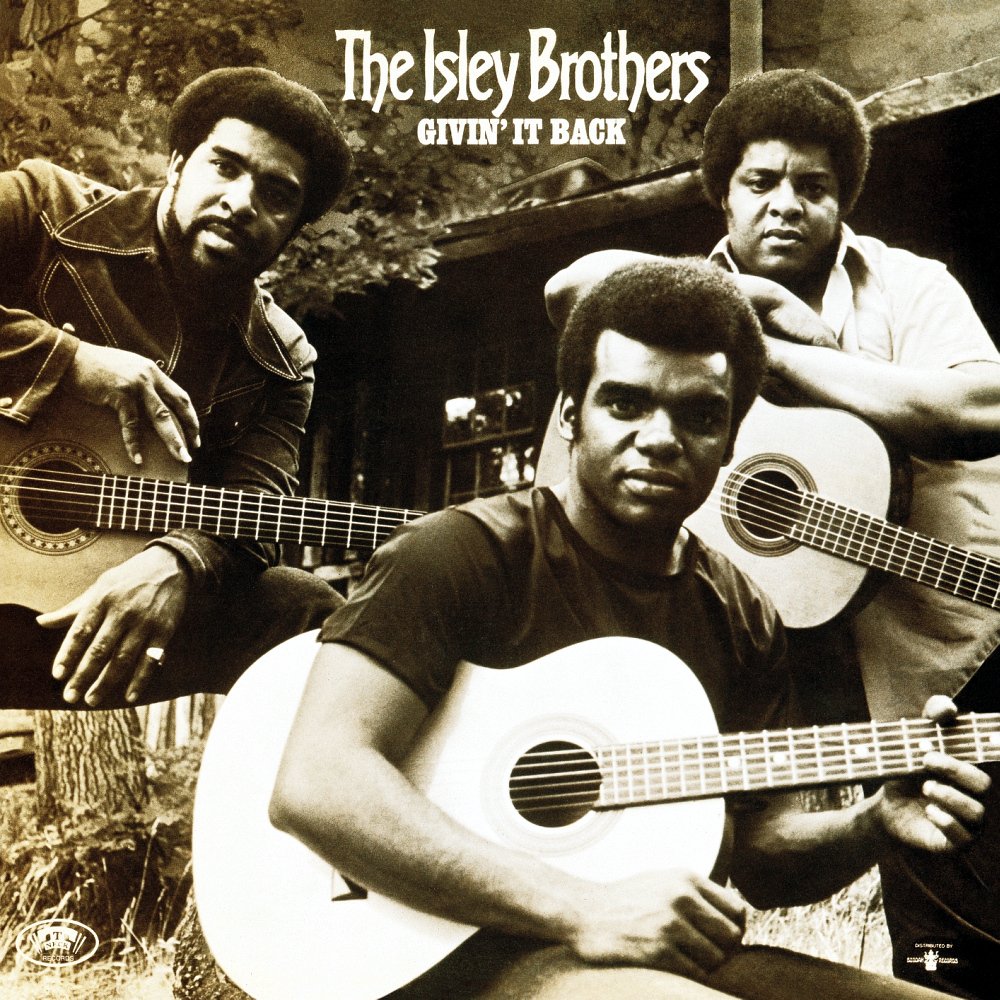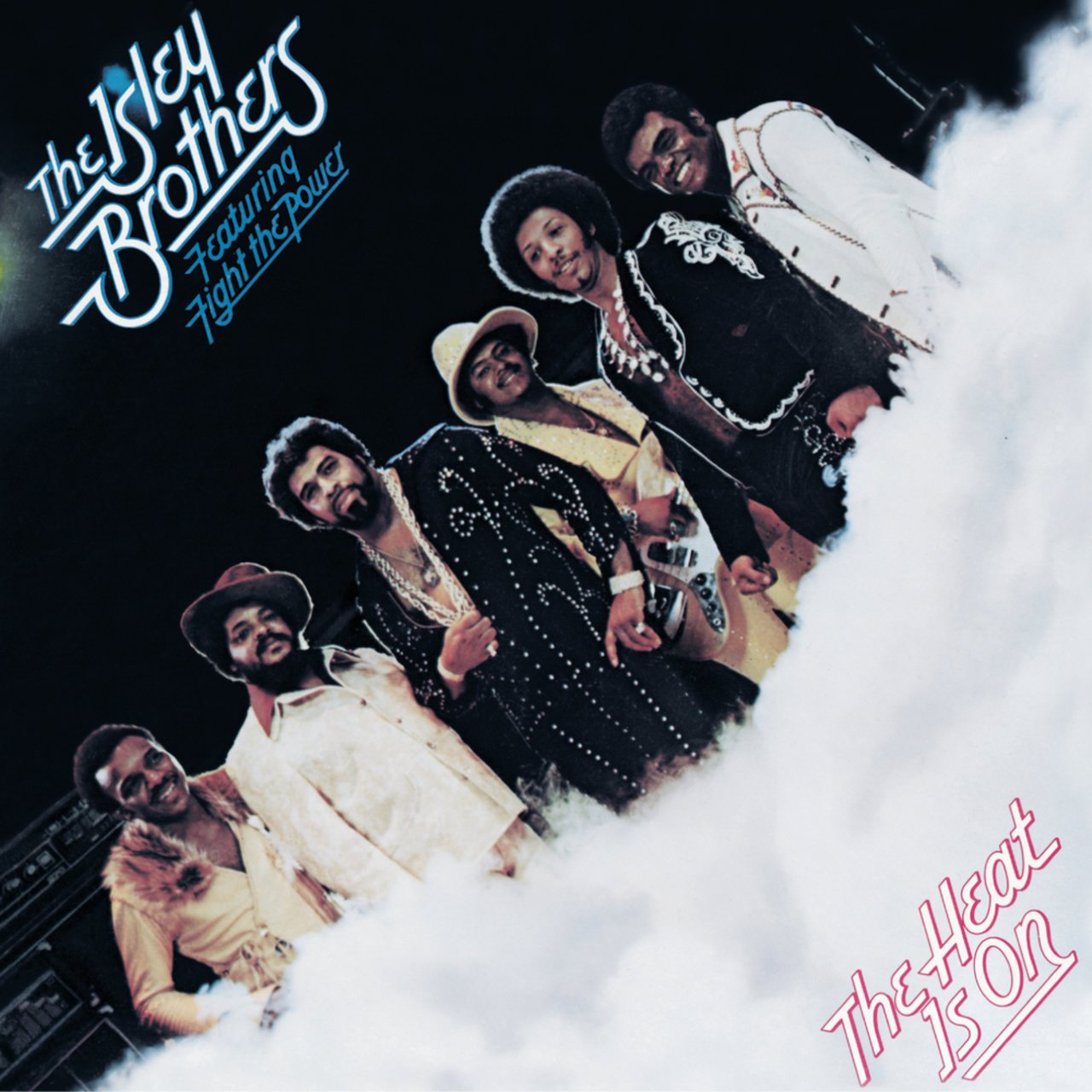Happy 50th Anniversary to The Isley Brothers’ eleventh studio album 3 + 3, originally released August 7, 1973.
When I wrote about The Isley Brothers’1975 album The Heat Is On, I expressed amazement that it was still possible to talk about the group in the present tense. With records stretching from the 1950s to the present day, perhaps what is less of a surprise is the capacity for turmoil and disharmony from a group with such a long history. Indeed, on March 23, 2023, The New York Post reported the legal action brought by Rudolph against his brother Ronald for loss of earnings, wherein he alleged Ron had violated a verbal agreement they’d had. Brothers they may be, but still the decades-old cliche of in-band, monetary disagreements persists.
But 1973 was a much happier time to be an Isley. Having left Motown after feeling constrained by the Henry Ford, Motor-City inspired production line, their eleventh album 3+3 marked the ultimate freedom for the group and the official expansion of it from the three original members to a self-contained band of six—hence the title. O’Kelly, Rudolph and Ronald were predominantly a vocal group in need of accompaniment and although they’d played on previous albums, 3+3 marked the official arrival of two more brothers (Ernie and Marvin) and a familial interloper, Chris Jasper.
Jasper had moved to New York from Cincinnati to study at the world-renowned Juilliard Music School before continuing his studies at C.W. Post, Long Island University. It was here, in New Jersey, that Jasper’s sister Elaine was living, having married Rudolph Isley and therefore where Chris’ path crossed with Marvin and Ernie Isley in Teaneck. They played in a band together and eventually began to provide musical accompaniment and songwriting to the original three brothers. But by 1973, Jasper and Ernie were the musical backbone of the group, writing and performing the record with style and aplomb.
Now a dynamic, self-contained mothership of musical excellence, the Isleys recorded at the Record Plant in Sausalito, California at the same time that Stevie Wonder recorded his masterpiece Innervisions (1973). But beyond sharing the same space to record, there was another musical link between the two. Just as Stevie had become bewitched by the sound and opportunities of synthesizers, so Jasper had also become intrigued by the instrument that Robert Margouleff and Malcolm Cecil had pioneered.
The Moog became a key part of the sound that drove Wonder to unparalleled success in the ‘70s, but it also became Jasper’s plaything to great effect too. It first rears its glorious head on “If You Were There” and comes served with an equally Stevie Wonder-sized dose of positivity and some glorious organ work too. On the Doobie Brothers cover “Listen To The Music,” Jasper maintains the acoustic strumming of the original but adds the Moog and organ once again to expand the original into something altogether funkier and more impactful.
Listen to the Album:
The album closer, the magnificent “Highways Of My Life,” runs the full gamut of Jasper’s keyboard skills. It opens with beautiful piano lines that give way to the manifold joys of the Moog’s sound—sheer perfection. The Moog is also prominent on “Sunshine (Go Away Today),” but alongside it is another musical calling card that laced the Isleys’ work with instrumental excellence. In 1965, a young, electrifyingly talented guitarist named Jimi Hendrix played on an Isleys record before going on to change the shape of music, but here another Black guitarist of great ability and power brought extra dimensions to the music the Isleys were producing. Ernie Isley’s magnificent guitar playing complemented Jasper’s Moog moods to perfection.
Within seconds of 3+3’s opening track starting, Ernie Isley’s guitar rips through the stratosphere and lets God’s light shine through on those lucky enough to hear it. “Who’s That Lady?” (as it was initially named) became the Isleys’ first top 10 single since 1969’s “It’s Your Thing” and heralded the onset of the most successful phase of their career. Looking at the scant lyrics in combination with the five-and-a-half minute running time, it becomes immediately obvious that the instrumentation takes center stage. Not that there’s anything wrong with Ron’s delivery of the slight lyrics, but Ernie Isley’s guitar is a force to be reckoned with on this iconic record, ripping and shredding with a newly acquired tone that wails with glorious abandon. That it still sounded so fresh when sampled by Kendrick Lamar 40 years later on “i” was no surprise to anyone who had fallen in love with the funk-rock masterpiece.
Alongside their own compositions, The Isley Brothers liked to take a beloved Tin Pan Alley-penned pop tune and turn it into a decidedly funkier entity. As Isaac Hayes took, pulled apart and reconstructed tunes by Burt Bacharach, so the Isleys took Carole King’s songbook (among others’) and applied some of the same principles to it. Jasper and Ernie Isley saw to it that the music transcended the original versions of these songs, but Ron Isley’s voice often elevated things further.
Take the James Taylor cover, “Don’t Let Me Be Lonely Tonight.” When Ron Isley slides up into his falsetto, it is as stunning as that other soul denizen of the ‘70s, Al Green. His expressive voice conveys every last drop of emotion, every moment of longing. And as sublime as the music is on their version of Seals & Crofts’ 1972 single “Summer Breeze” (and it is!), it is added to immeasurably by Ronald’s voice. It hits me in ways countless others don’t.
Enjoying this article? Click/tap on the album covers to explore more about The Isley Brothers:
With such a triumvirate of musical powers, it was almost certain that The Isleys would find success, but familiar notions would bring about an end to their winning formula. Jasper often felt unappreciated by others in the group, given that he and Ernie predominantly wrote the music and Jasper arranged the dynamic sounds that propelled the family to success. With those kinds of deeply held, stubborn feelings, the future soon involved the various parts going their own way.
There is an oft-misquoted phrase that says, “The blood of the covenant is thicker than the water of the womb,” meaning that the binds we choose are stronger than those we are born into. It seems for The Isley Brothers that neither the bonds they were born into nor the ones they chose were strong enough to sustain the golden working relationships as they passed into the mid-1980s. Their 1970s output, though, is testament to the genius concoction the family managed to create and 3+3 may just be their greatest work of art.
Listen:



